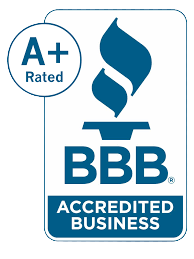Commercial Roofing
Commercial roofing refers to the process of installing, repairing, and maintaining roofs on commercial buildings, which can include offices, warehouses, shopping centers, factories, and more.Commercial Roofing
Types of Commercial Roofs
There are several types of commercial roofing systems that businesses can choose from, including built-up roofing (BUR), single-ply roofing options like TPO, PVC, and EPDM, metal roofing, modified bitumen roofing, and green roofs. Each option comes with distinct benefits, and the best choice depends on your building's specific needs.
Roof Installation for Commercial Buildings
When it comes to commercial roof installation, hiring a professional contractor is essential. Experienced professionals understand the complexities involved in large-scale projects. The process requires proper planning, safety measures, and adherence to building codes. Choosing the right contractor ensures that the installation is done securely and efficiently.
Routine Roof Maintenance for Commercial Roofs
Roof maintenance is crucial for ensuring the longevity and effectiveness of your commercial roof. Regular inspections, repairs, and cleaning can help avoid issues such as leaks, water damage, or deteriorating materials. By keeping your roof well-maintained, you can avoid expensive repairs and enhance its performance.
Energy Efficiency with Commercial Roofs
Today, many commercial roofs are designed with energy efficiency in mind. These roofs help reduce the heating and cooling costs of your building by improving insulation and providing reflective surfaces that reduce heat absorption. Investing in energy-efficient roofing can lead to long-term savings and make your building more environmentally friendly.
Choosing Roofing Contractors for Your Commercial Roof
Hiring the right roofing contractor is essential for any commercial roofing project. A professional contractor ensures that all aspects of the roof installation, maintenance, and repair are carried out with precision. They also have the knowledge to recommend the best roofing materials suited for your building’s needs.
Roofing Safety Considerations
Safety is always a top concern when working on commercial roofing projects. These projects often involve working at significant heights, so proper safety equipment and protocols must be in place. Roofing contractors should use harnesses, helmets, and fall protection to protect workers and ensure a safe working environment.
Commercial Roof Lifespan
The lifespan of a commercial roof varies based on the materials used, local weather conditions, and maintenance practices. With the proper care, some roofs can last between 20 and 50 years or more. Regular inspections and timely repairs can extend the lifespan of your roof, saving you money on costly replacements.
Benefits of Roof Coatings for Commercial Roofs
Roof coatings offer added protection for existing commercial roofs. These coatings can improve durability, enhance energy efficiency, and provide additional protection against UV rays and weather-related damage. A well-applied coating can significantly extend the life of your roof and reduce long-term maintenance costs.


